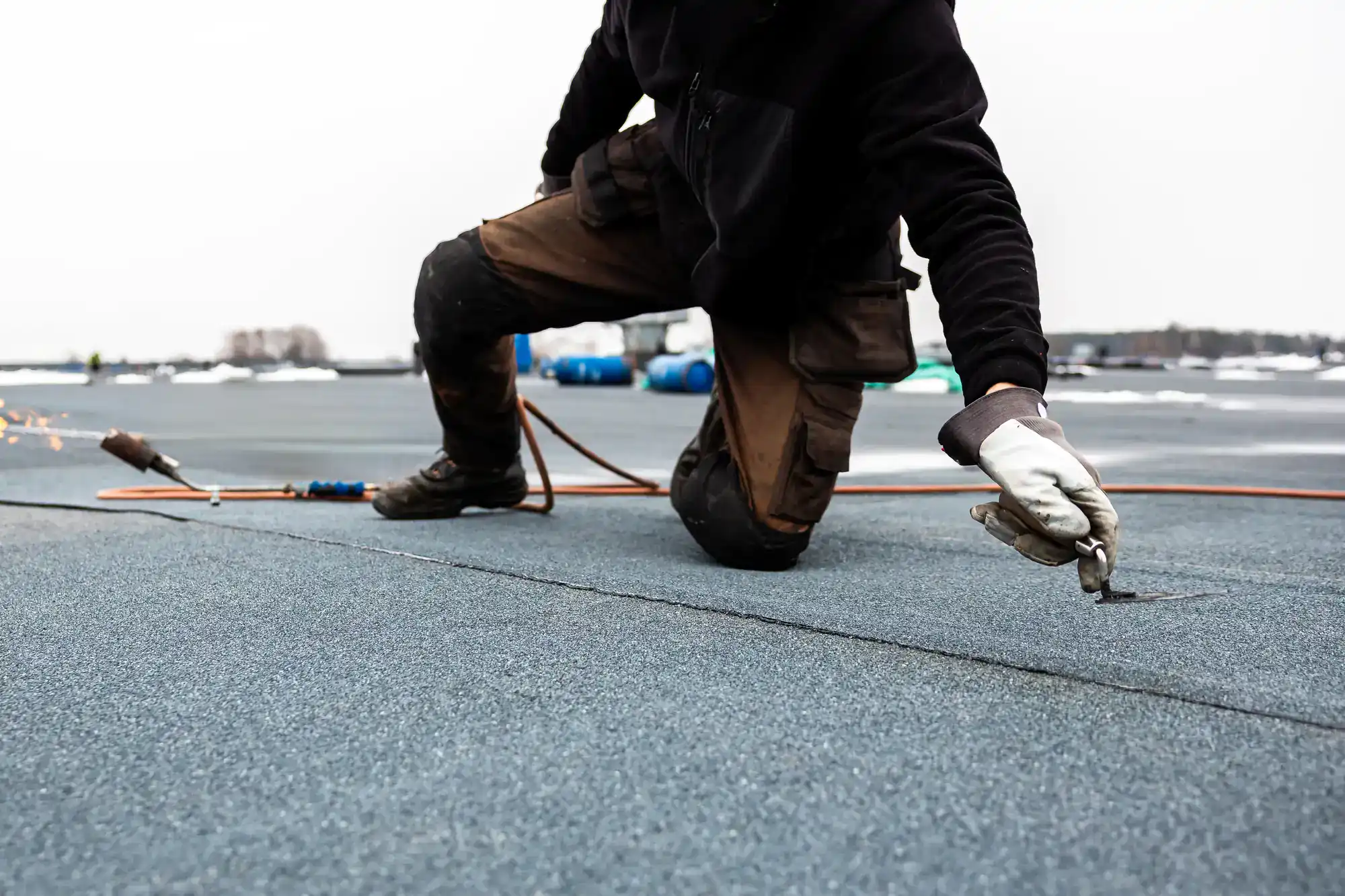
Hear from Our Customers
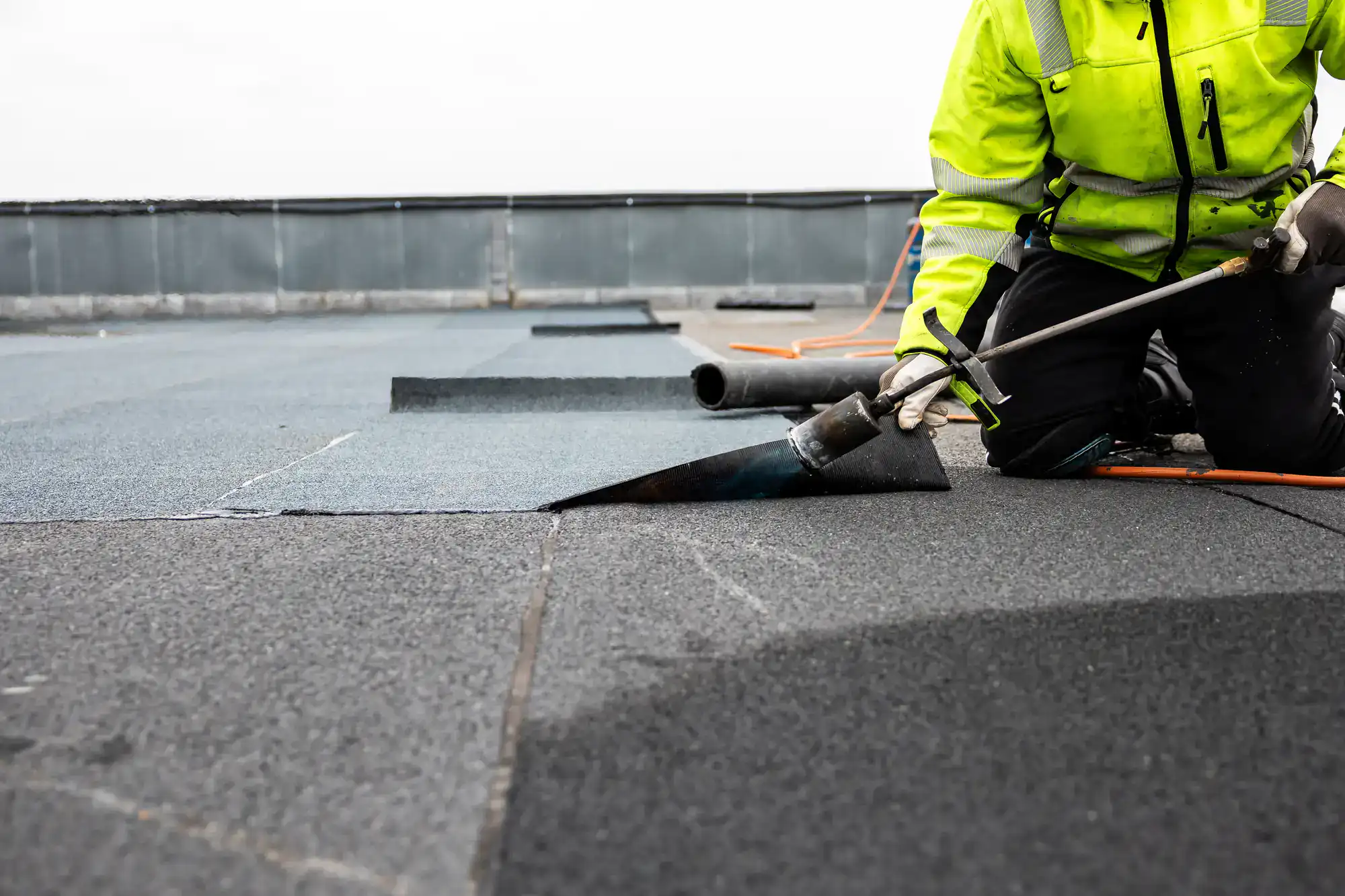
You get a roof that actually keeps water out. No more buckets in the living room during storms. No more wondering if that stain on the ceiling is getting bigger.
Your energy bills drop because your roof isn’t letting conditioned air escape through gaps and poor insulation. With Shinnecock Hills facing a 185% increase in days over 90°F in the coming decades, that efficiency matters more than ever.
You get peace of mind knowing your roof can handle Long Island’s coastal weather. Salt air, nor’easters, summer heat waves – your flat roof becomes an asset instead of a constant worry.
We’ve been fixing flat roofs in Shinnecock Hills for over 22 years. We’re a family-owned business that understands what coastal Long Island weather does to roofing systems.
We’ve seen every type of flat roof problem this area throws at properties. From TPO seams failing in high winds to EPDM membranes deteriorating under intense summer heat, we know exactly what works here and what doesn’t.
When we assess your roof, we give you the straight answer about repair versus replacement. No upselling, no scare tactics. Just honest recommendations based on what we see and what your property actually needs.
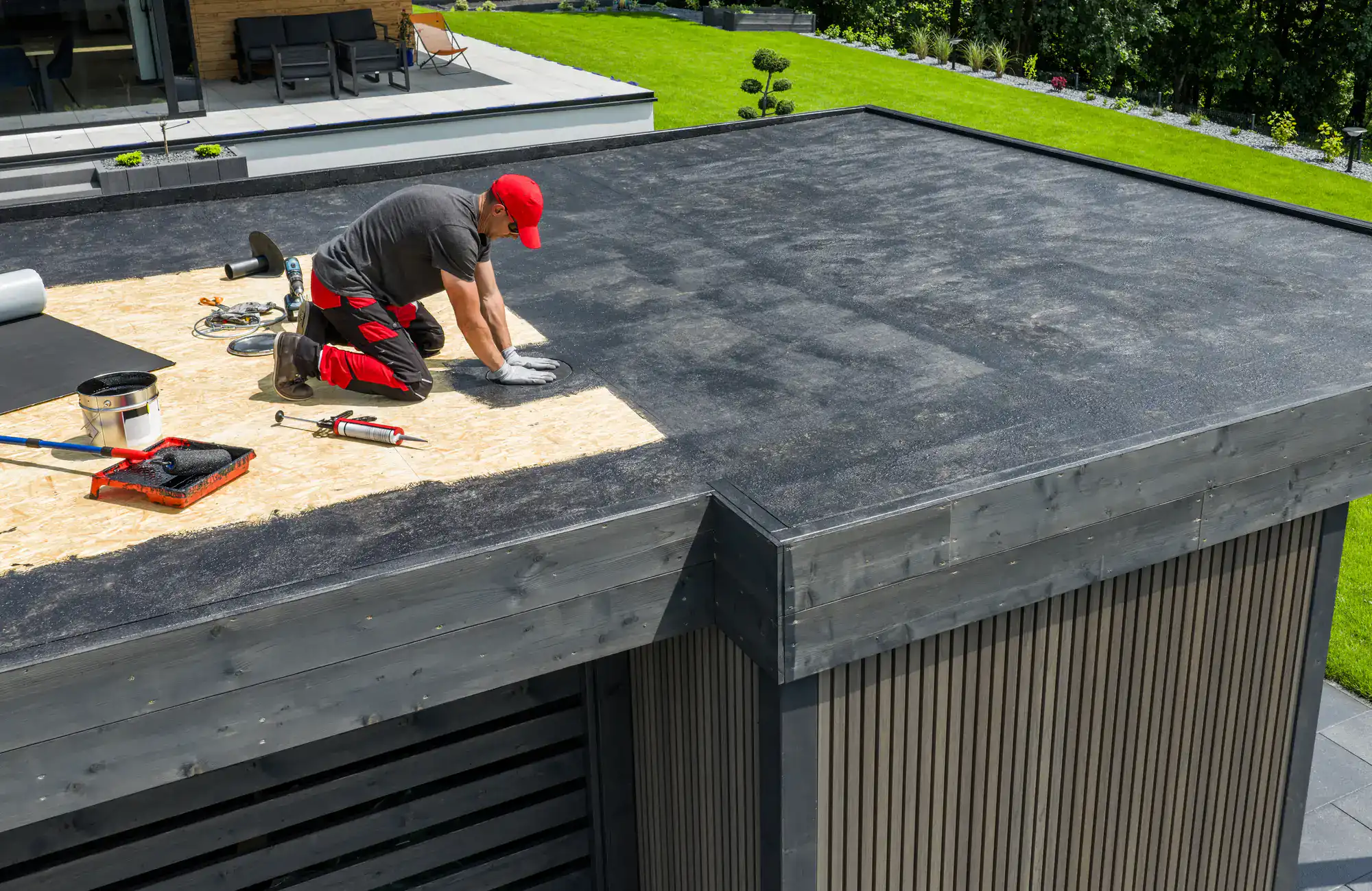
First, we thoroughly inspect your existing flat roof system. We check the membrane, flashing, drains, and substrate. We use this assessment to determine whether you need targeted repairs or a complete replacement.
Next, we explain exactly what we found and recommend the best solution for your specific situation and budget. Whether that’s TPO for durability, EPDM for flexibility, or modified bitumen for easy maintenance, we match the material to your needs.
During installation, we protect your property and work efficiently to minimize disruption. We handle permits, coordinate with building management if needed, and ensure proper disposal of old materials. After completion, we walk you through the work and provide maintenance recommendations to maximize your roof’s lifespan.
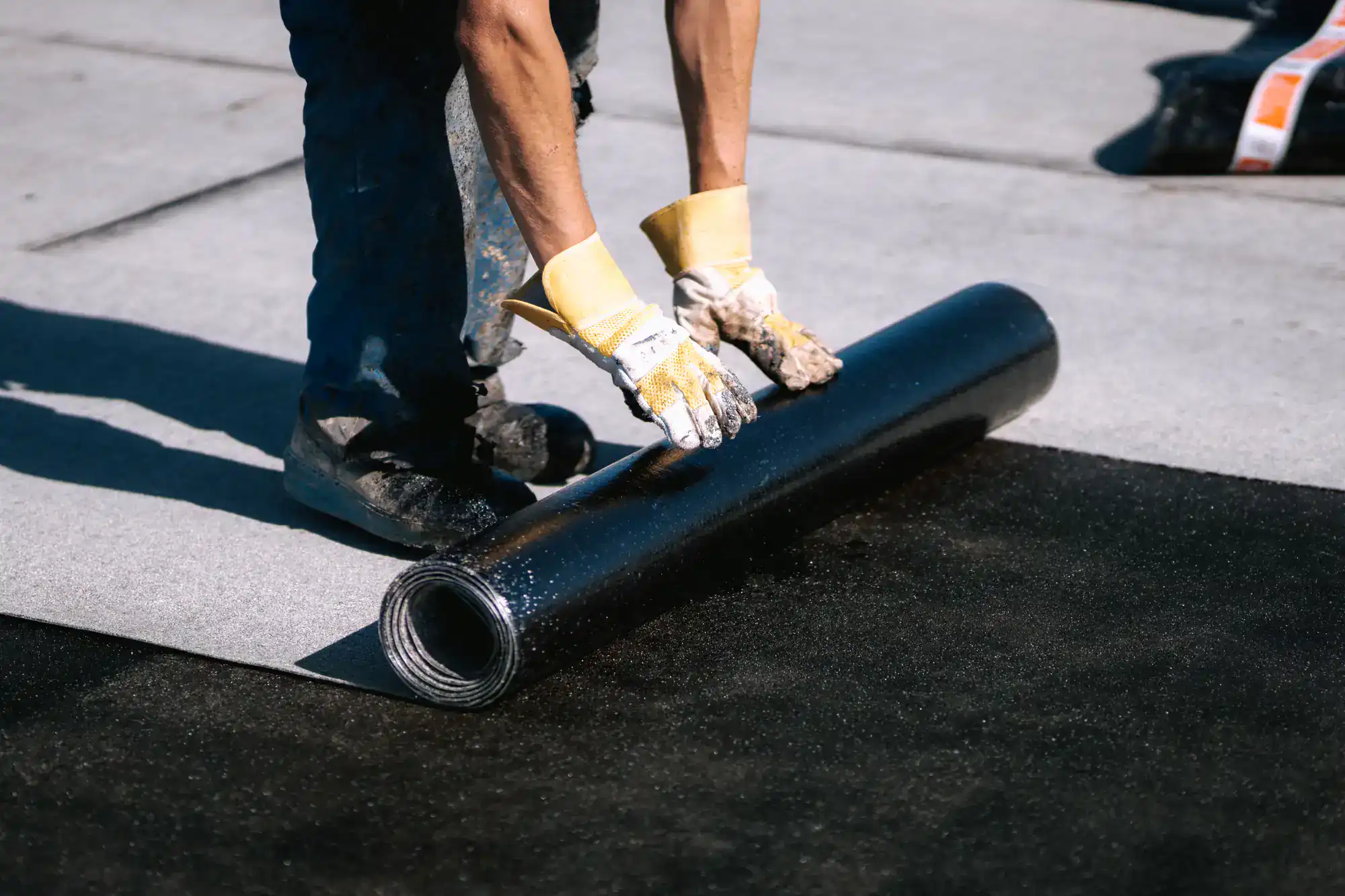
Ready to get started?
Your flat roofing service includes complete membrane installation or repair, proper flashing around all penetrations, and upgraded drainage solutions when needed. We use commercial-grade materials designed for Long Island’s specific climate challenges.
For Shinnecock Hills properties, we often recommend TPO roofing systems because they reflect heat effectively – crucial as local temperatures continue rising. EPDM rubber roofing works well for properties with complex roof shapes, while modified bitumen offers excellent durability for high-traffic roof areas.
We also include leak detection services using advanced methods to pinpoint problems before they cause interior damage. Given the high property values in Shinnecock Hills, preventing water damage is essential for protecting your investment. Every installation comes with proper insulation upgrades to improve energy efficiency and reduce your cooling costs during increasingly hot summers.
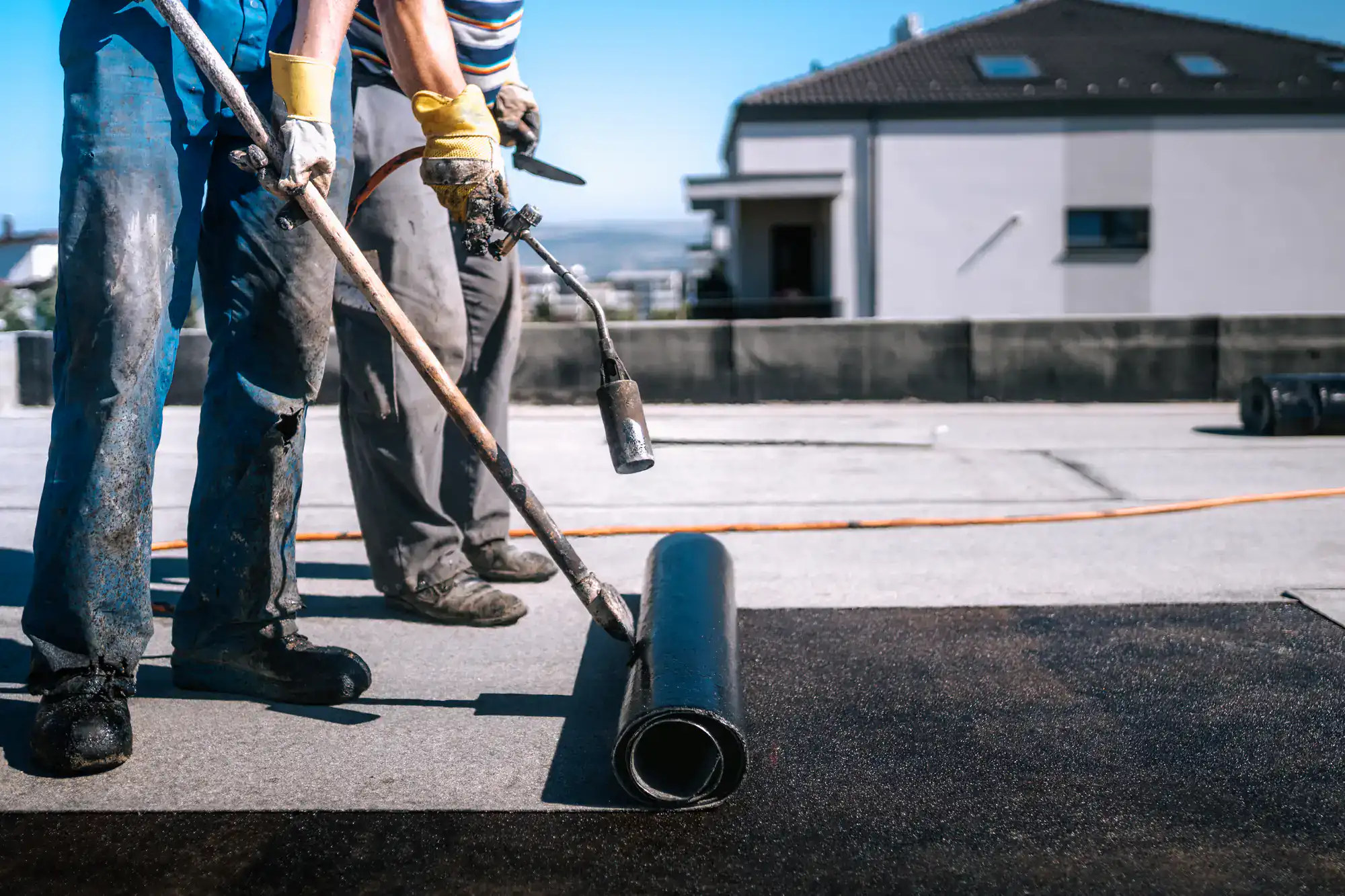
Quality TPO roofing systems typically last 15-20 years in our coastal Long Island climate when properly installed and maintained. The key factors affecting lifespan include membrane thickness, installation quality, and regular maintenance.
In Shinnecock Hills, we see TPO perform well because it reflects heat effectively and resists the salt air corrosion that affects some other materials. However, the membrane thickness matters – we recommend 60-mil TPO minimum for residential properties and 80-mil for commercial applications.
Regular inspections every 2-3 years help identify small issues before they become major problems. Simple maintenance like keeping drains clear and checking seams after major storms can extend your TPO roof’s life significantly.
The most common causes are failed seams, damaged flashing around roof penetrations, and clogged drainage systems. Our coastal location creates unique challenges that accelerate these problems.
Salt air corrodes metal components faster than inland areas, particularly around HVAC units, skylights, and roof drains. High winds during nor’easters can lift membrane edges if they weren’t properly secured initially. Summer heat cycles cause materials to expand and contract, which eventually weakens seams.
Poor original installation is often the root cause. We frequently find flat roofs where contractors used inadequate fastening, skipped proper substrate preparation, or used materials not suited for coastal conditions. That’s why choosing an experienced local contractor who understands Shinnecock Hills’ specific challenges makes such a difference.
It depends on the roof’s age, current condition, and extent of problems. Generally, if your roof is under 10 years old with localized issues, repairs make sense. If it’s over 15 years old with multiple problem areas, replacement is usually more cost-effective.
We evaluate the membrane condition, substrate integrity, and insulation effectiveness. Multiple leak areas, widespread membrane deterioration, or structural issues typically indicate replacement is the better investment. However, isolated problems like damaged flashing or small punctures can often be repaired effectively.
The decision also considers your long-term plans. If you’re planning to stay in your Shinnecock Hills property for many years, investing in a complete replacement with modern materials often provides better value than repeated repairs on an aging system.
We provide emergency response within 12-24 hours for urgent leak situations in Shinnecock Hills. Our emergency service includes temporary repairs to stop active leaks and protect your property until permanent repairs can be completed.
Emergency situations often occur during or after major storms when multiple properties need attention. We prioritize based on severity – active leaks causing interior damage get immediate attention, while minor issues may be temporarily sealed until weather conditions allow proper repairs.
We keep emergency materials in stock specifically for quick response situations. This includes temporary membrane patches, emergency sealants, and tarping materials. Our goal is always to stop the immediate damage first, then schedule proper permanent repairs as soon as conditions allow.
TPO and EPDM are the top performers for our climate, each with specific advantages. TPO excels in heat reflection, which is increasingly important as Shinnecock Hills temperatures rise. EPDM offers superior flexibility for buildings that experience significant thermal movement.
Modified bitumen works well for properties where easy repairs are important – it’s more forgiving if damage occurs and can be patched more easily than membrane systems. However, it requires more maintenance in our climate due to UV exposure and thermal cycling.
We don’t recommend built-up roofing (tar and gravel) for most Shinnecock Hills properties anymore. While it’s economical initially, it requires more frequent maintenance and doesn’t perform as well in our coastal conditions. Modern single-membrane systems provide better long-term value and performance.
Flat roof replacement typically ranges from $8-15 per square foot depending on materials, roof complexity, and current condition. TPO systems are generally more economical, while EPDM and modified bitumen fall in the middle to upper range.
Factors affecting cost include roof size, number of penetrations, drainage modifications needed, and insulation upgrades. Properties requiring structural repairs or significant drainage improvements will be toward the higher end of the range. However, these improvements are often necessary for long-term performance.
We provide detailed written estimates that break down material and labor costs so you understand exactly what you’re paying for. We also discuss financing options and help you understand the long-term value of different material choices based on your specific property and situation.
Other Services we provide in Shinnecock Hills